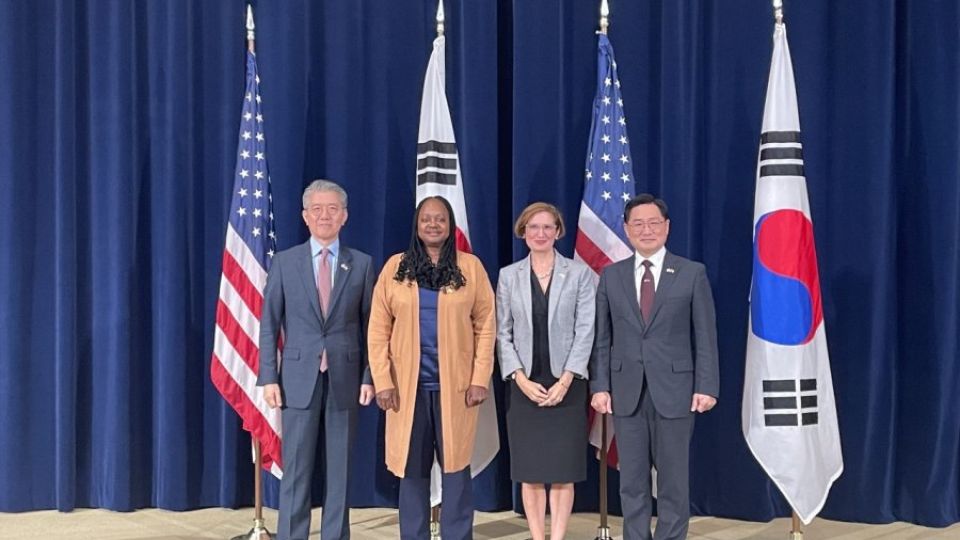September 6, 2024
SEOUL – South Korea and the United States concluded Wednesday that the possibility of North Korea launching “grave provocations” around the US presidential election in November could not be dismissed, prompting discussions on a coordinated response to a range of potential scenarios.
The high-level meeting of the Extended Deterrence Strategy and Consultation Group, the alliance’s premier annual forum for discussing and coordinating security strategy and policy issues impacting the Korean Peninsula and the broader Indo-Pacific region, convened in Washington with the participation of senior officials from foreign affairs and defense agencies.
First Vice Minister of Foreign Affairs Kim Hong-kyun, who led the South Korean delegation, stated that the EDSCG meeting was convened at a time when the “security situation on the Korean Peninsula is graver than ever before” during a press briefing following the meeting.
Kim denounced North Korea’s “blatantly obvious” nuclear threats, saying the nation is resorting to “underhanded provocations, such as GPS signal jamming and the release of balloons filled with waste,” which pose tangible harm to the South Korean public and the safety of nearby aircraft and ships.
“The joint assessment by South Korea and the US authorities is therefore that they cannot entirely rule out the possibility of North Korea carrying out grave provocations before or after the US presidential election,” Kim said after the six-hour meeting. “In light of this, both sides engaged in consultations on a range of potential provocations and discussed ways to respond to them.”
South Korea’s Deputy Minister for National Defense Policy Cho Chang-lae said that North Korea’s “potential strategic provocations” ahead of the US election could include actions such as a seventh nuclear test or an intercontinental ballistic missile launch at a normal trajectory, rather than the lofted angles commonly used in North Korea’s previous missile tests.
“We had extensive discussions today on potential strategic provocations that could occur before the presidential election,” Cho said.
From the US side, Under Secretary of State for Arms Control and International Security Bonnie Jenkins and Acting Deputy Under Secretary of Defense for Policy Cara Abercrombie attended the consultation.
Kim noted that Seoul and Washington “conducted contingency scenario-based discussions for the first time during the EDSCG meeting.”
“The diplomatic and defense authorities of both countries held in-depth discussions on effective deterrence and countermeasures in the event of contingencies, grounded in concrete scenarios. This not only deepened mutual understanding but also laid the foundation for future discussion,” Kim added.
The EDSCG meeting’s joint statement also emphasized, “In the context of a deteriorating security environment, the principals conducted a scenario-based discussion, for the first time at the EDSCG, to strengthen policy planning and coordination.”
Cho further explained that Seoul and Washington “held their first-ever scenario-based discussions simulating North Korean nuclear threats, exploring a range of practical response options.”
The joint statement also reaffirmed the US’ “ironclad commitment to draw on the full range of its military capabilities, including nuclear, to support extended deterrence” for South Korea.
“The United States reiterated that any nuclear attack by the DPRK against the United States or its allies is unacceptable and will result in the end of that regime,” the statement read, referring to North Korea by the acronym of its official name, the Democratic People’s Republic of Korea.
“We take very seriously our extended deterrence,” Jenkins said during the press briefing. “We have been doing everything we can, including this meeting, to show just how committed we are to that.”


